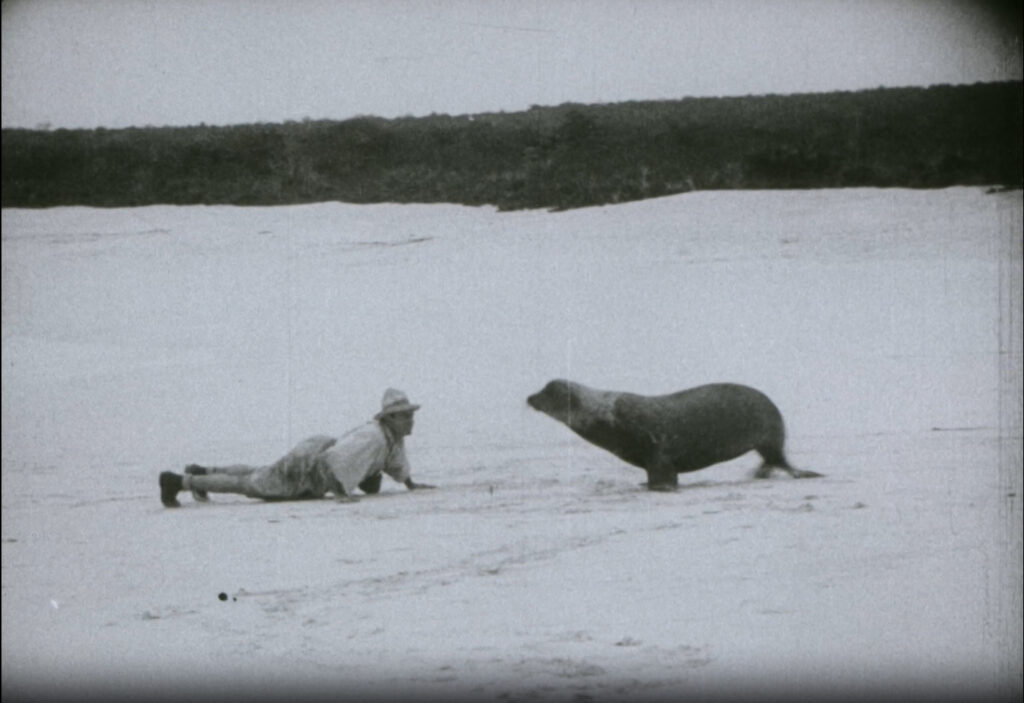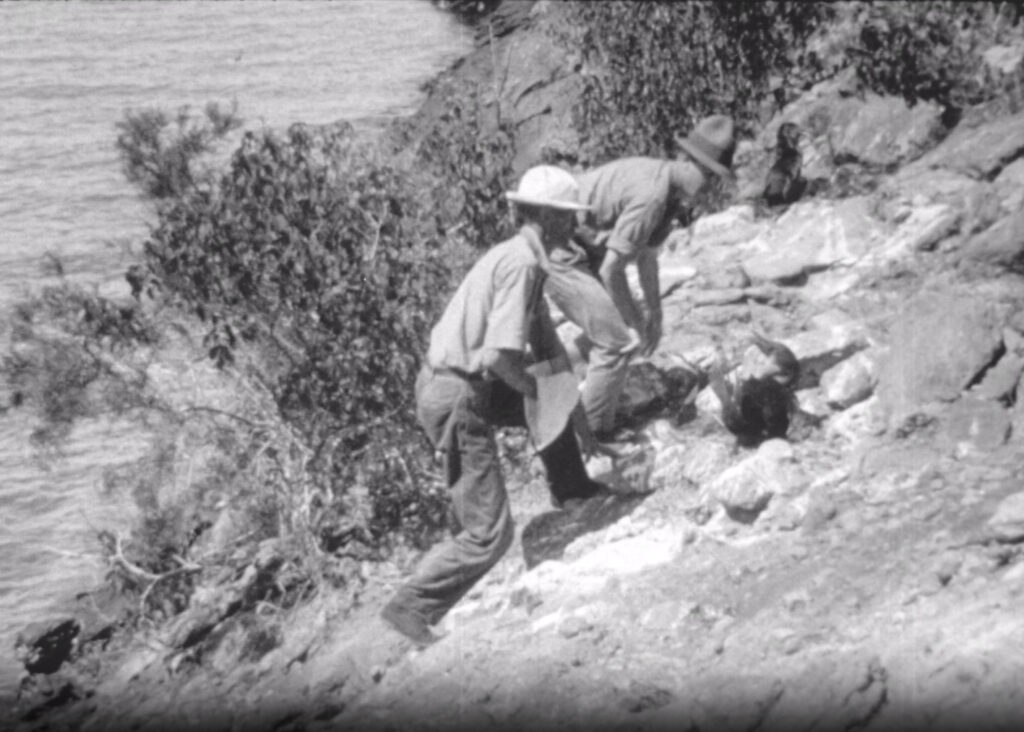The Wildlife Conservation Society (WCS) Library and Archives is excited to publicly unveil its Department of Tropical Research Film Collection. Through a program made possible by funding from the Mellon Foundation, WCS was awarded a Recordings at Risk grant from the Council on Library and Information Resources (CLIR) to digitize and make publicly available these films, created between the 1920s and 1960s.
The films in this collection are rare examples of the early integration between motion pictures and scientific practices. What makes the films of the Department of Tropical Research (DTR) particularly special is rather than just using film as a tool for scientific research or documentation, they started using the medium to generate public interest in their work by a mass audience.
Led by the naturalist William Beebe, the DTR conducted over four dozen expeditions across tropical terrestrial and marine locales. The staff of the DTR were among the first Western scientists to study the interconnectedness of tropical wildlife and their habitats through close, first-hand observations. In addition to field scientists, the staff of the DTR included writers, artists, and filmmakers who in addition to conducting scientific research were responsible for communicating the details of their fieldwork to a mass audience. This form of communication was likely also essential to the DTR in raising funds to cover the high costs of their research.
The film below is among the oldest DTR films we have in the WCS Archives. Created in 1923 and 1925, it contains clips from their two expeditions to the Galápagos Islands.

Shot by John Tee-Van and Ernest Schoedsack (the future co-director of King Kong [1933]) the material in the above reel was part of the stream of newsreels, books, and articles that the DTR released in both popular magazines and scientific journals. Less than a year after his first expedition to the Galápagos Islands, Beebe published the book Galapagos: World’s End (1924). The book spent a year on the bestsellers list, with its vivid color illustrations and black-and-white photographs of rare wildlife. It was an accessible account of the islands that reactivated interest in this area as the site that inspired Darwin’s natural history studies. Some of the DTR’s accompanying films of flightless cormorants, tortoises, iguanas and albatrosses were released as newsreels and introduced the Galápagos Islands to new audiences across the world.
In 1925 Beebe harnessed the public’s interest in his work and funded a six-month return expedition to the Galápagos Islands aboard the steam yacht Arcturus.

Above are two films shot by Ernest Schoedsack from the Arcturus expedition. The first film is an example of a newsreel exhibited alongside silent feature films, and the second film was shown to audiences attending William Beebe’s in-person lectures. In 1926, less than a year after returning from his second expedition to the Galápagos Islands, Beebe published another best-selling account of his oceanographic expedition, The Arcturus Adventure. The combination of Beebe’s books and films, according to Galápagos Conservation Trust Ambassador Henry Nicholls, reactivated public interest and led to a rapid increase in tourism to the Galápagos Islands.
Read more about the project on the WCS Newsroom.
This post was written by Leopold Krist, Project Archivist for the WCS Archives project Preserving Conservation Science and History: Digitizing the Department of Tropical Research Films. This project was supported by a Recordings at Risk grant from the Council on Library and Information Resources (CLIR). The grant program is made possible by funding from the Mellon Foundation.
